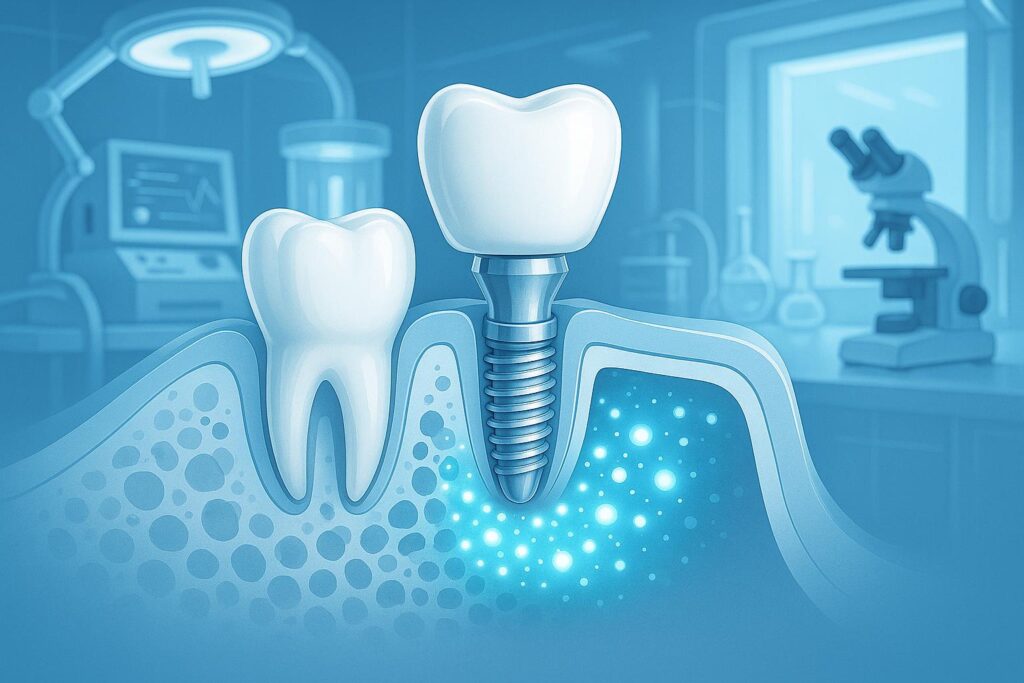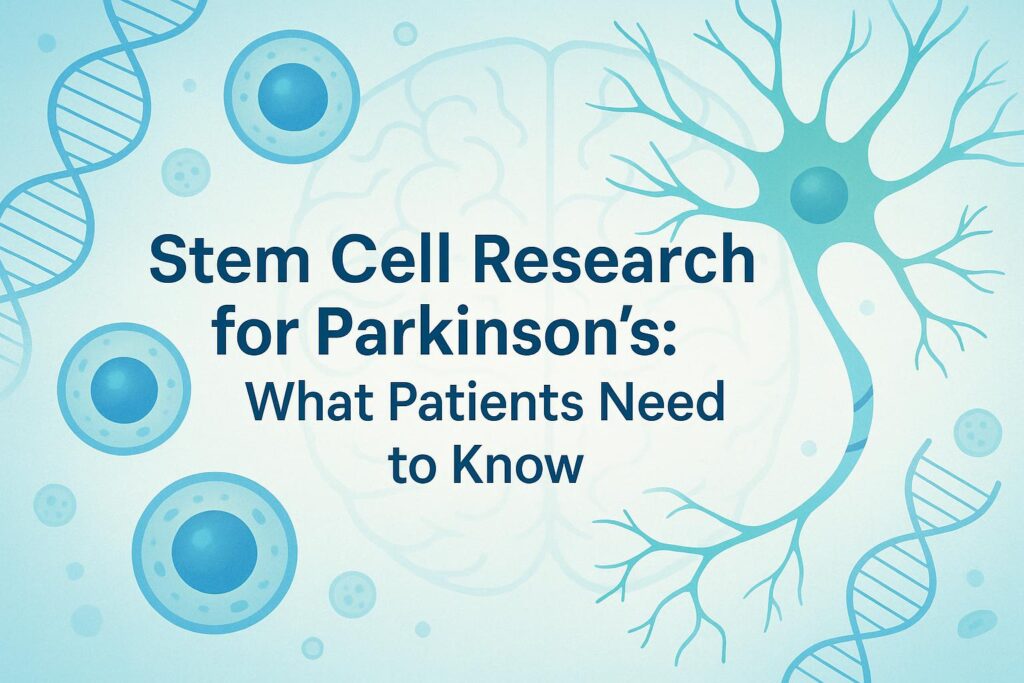If you suffer from arthritic shoulder pain, you know how debilitating it can be. The constant ache, limited mobility, and difficulty performing everyday tasks can greatly impact your quality of life. Thankfully, there may be a new treatment option that offers hope for relief – stem cell therapy.
Stem cell therapy is part of the exciting field of regenerative medicine, which aims to utilize the body’s natural healing abilities to treat degenerative conditions like shoulder arthritis. Although still undergoing research and development, stem cell therapy has shown promise in alleviating the pain and improving the function of arthritic shoulders.
It’s important to note that currently, stem cell therapy for arthritic shoulders is mainly available in clinical research trials approved by the FDA. While it may not be widely accessible to everyone at this time, it’s an exciting area of study that offers hope for future treatment options.
Key Takeaways:
- Stem cell therapy shows promise in treating arthritic shoulders.
- It is a part of the emerging field of regenerative medicine.
- Currently, it is mainly available in clinical research trials approved by the FDA.
- Stem cell therapy aims to alleviate pain and improve function in arthritic shoulders.
- Further research is needed to make it widely accessible as a treatment option.
Understanding Stem Cell Therapy
Stem cell therapy is an advanced and innovative approach for treating arthritic shoulder joints without surgery. Stem cells, the building blocks of human tissue, hold immense potential in providing non-surgical treatment options for shoulder arthritis. By harnessing the regenerative capabilities of stem cells, this therapy aims to stimulate the regrowth of cartilage, which is often lost in degenerative joint conditions.
Studies have shown promising results in using stem cell therapy to relieve pain and improve function in arthritic shoulders. These cells have the ability to communicate healing information to other cells in the body, promoting the natural repair process. However, it’s essential to be aware that many stem cell treatments currently available lack a sufficient number of stem cells to be truly effective.
Most stem cell therapies on the market do not contain enough stem cells to achieve the desired outcomes. Misleading marketing and mislabeled treatments without living stem cells pose significant concerns and challenges.
While stem cell therapy may not cure the disease entirely, it primarily focuses on providing pain relief and enhancing joint function. This approach is a welcome alternative to invasive surgical procedures, aiming to address the root cause of shoulder arthritis and improve the overall quality of life for patients.
Effective Non-Surgical Treatment
One of the key advantages of stem cell therapy for shoulder arthritis is its non-surgical nature. Unlike traditional interventions, such as invasive surgery, stem cell therapy carries minimal risks and complications. It harnesses the body’s natural healing capabilities to repair damaged tissues and reduce inflammation, providing a more holistic and efficient approach to treating arthritic shoulder joints.
In addition, stem cell therapy offers a shorter recovery time compared to surgical procedures, allowing individuals to return to their regular activities sooner. This non-invasive treatment option provides a favorable alternative for patients seeking pain relief and improved shoulder functionality without the need for major surgery.
The Importance of Choosing the Right Treatment
When considering stem cell therapy for shoulder arthritis, it is crucial to consult with a qualified healthcare professional and ensure that the treatment chosen contains living stem cells. Due to the increasing popularity of stem cell therapy, there has been a rise in misleading marketing and mislabeled treatments that lack the necessary living stem cells for effectiveness.
Research and clinical trials play a vital role in confirming the safety and efficacy of stem cell therapy for arthritic shoulder joints. By selecting a reputable and reliable provider, individuals can optimize their chances of experiencing the benefits of this cutting-edge regenerative therapy.
Continued Advancement in Shoulder Arthritis Treatment
As the field of regenerative medicine continues to advance, stem cell therapy holds great promise in revolutionizing the treatment of shoulder arthritis. Ongoing research and clinical trials are exploring innovative techniques to optimize the use of stem cells, improve treatment outcomes, and make this therapy widely available to patients seeking effective non-surgical options for arthritic shoulder joints.
By understanding the principles and potential of stem cell therapy, individuals can make informed decisions regarding their shoulder arthritis treatment and explore the possibilities of this advanced and promising therapy.
The Need for Shoulder Arthritis Treatment
Shoulder arthritis, characterized by the degeneration of cartilage, can cause severe pain, stiffness, and limited mobility. Current treatment options for shoulder arthritis include pain relievers, exercise, occasional steroid injections, and, in severe cases, shoulder replacement surgery. However, innovative treatments like stem cell therapy offer new possibilities for managing arthritic shoulder pain and improving joint function without the need for invasive surgery.
While traditional treatment methods provide relief for some patients, they may not be effective for everyone. The innovative treatments for shoulder arthritis focus on addressing the root cause of the pain and promoting natural healing of the affected joint.
One cutting-edge and cutting-edge regenerative therapy for arthritic shoulder is stem cell therapy. This advanced approach harnesses the power of stem cells to stimulate tissue regeneration and reduce inflammation, providing long-term relief from pain and improving overall joint function. By using a patient’s own stem cells, this treatment offers a safe and effective solution for managing shoulder arthritis.
Stem cell therapy involves the injection of concentrated stem cells directly into the affected joint. These cells have the unique ability to differentiate into various types of cells, including cartilage cells. By replenishing the damaged cartilage with these new, healthy cells, shoulder pain management with stem cell therapy aims to restore joint functionality and alleviate discomfort.
The efficacy of stem cell therapy in treating shoulder arthritis has been demonstrated in various research studies. Patients who have undergone this advanced therapy have reported significant pain reduction, increased mobility, and improved quality of life. Clinical trials and real-world clinical experiences have shown promising results, establishing stem cell therapy as a viable and effective option for shoulder arthritis treatment.
The benefits of stem cell therapy for arthritic shoulder extend beyond pain relief. Unlike traditional treatment options, stem cell therapy is a non-invasive procedure with minimal risks and complications. It eliminates the need for extensive surgery and reduces the recovery time, allowing patients to return to their daily activities sooner.
“Stem cell therapy revolutionizes the way we approach shoulder arthritis. It offers a non-surgical and regenerative solution, providing hope and relief to patients suffering from chronic shoulder pain.”
By embracing innovative treatments for shoulder arthritis like stem cell therapy, patients can experience a significant improvement in their shoulder pain and functional limitations. This cutting-edge regenerative therapy offers a personalized and advanced approach to managing arthritic shoulder conditions, ultimately enhancing the overall quality of life for individuals affected by this debilitating condition.
“Stem cell therapy offers a personalized and advanced approach to managing arthritic shoulder conditions, enhancing the overall quality of life for individuals affected by this debilitating condition.”
Stem Cell Therapy for Shoulder Osteoarthritis
Are you suffering from shoulder osteoarthritis? Stem cell therapy offers a minimally invasive, non-surgical solution for promoting natural healing in your shoulder joint. By injecting stem cells into the affected area, this innovative therapy helps repair damaged tissue, reduce inflammation, and alleviate pain. Additionally, combining stem cell therapy with platelet-rich plasma (PRP) treatment further enhances the healing process.
Stem cell therapy utilizes the regenerative capacity of stem cells to stimulate the growth of new, healthy tissue in the shoulder joint. These unique cells have the ability to differentiate into various cell types, including cartilage cells, which are crucial for restoring joint health. By harnessing the power of your body’s own cells, stem cell therapy offers a safe and effective alternative to surgical interventions.

The combination of stem cell therapy and PRP treatment involves using concentrated platelets from your own blood to further optimize the healing process. Platelets contain growth factors and other signaling molecules that help stimulate tissue regeneration and reduce inflammation. When used in conjunction with stem cell therapy, PRP treatment enhances the effectiveness of the therapy, leading to improved outcomes in shoulder osteoarthritis patients.
Research has shown promising results in the use of stem cell therapy for shoulder osteoarthritis. A study published in the Journal of Orthopaedic Surgery and Research found that patients who underwent stem cell therapy experienced significant pain reduction, improved joint function, and positive imaging findings after one year of treatment.
Benefits of Stem Cell Therapy for Shoulder Osteoarthritis
Stem cell therapy offers several advantages over traditional treatment options for shoulder osteoarthritis. Here are some key benefits:
- Minimally invasive: Stem cell therapy is a non-surgical procedure, avoiding the risks and complications associated with invasive surgical interventions.
- Reduced recovery time: Compared to surgery, stem cell therapy has a shorter recovery period, allowing you to return to your regular activities sooner.
- Promotes natural healing: By harnessing the regenerative potential of your own cells, stem cell therapy stimulates the natural healing process in your shoulder joint.
- Alleviates pain and inflammation: Stem cells help reduce inflammation and promote the repair of damaged tissue, leading to pain relief and improved joint function.
With its ability to promote natural healing and improve joint function, stem cell therapy is an effective treatment option for shoulder osteoarthritis. Consult with a medical professional to determine if stem cell therapy is suitable for your specific condition and needs.
The Advantages of Stem Cell Therapy for Shoulder Pain
When it comes to treating shoulder pain, stem cell therapy offers several advantages over surgical interventions. Not only does it provide effective relief, but it also minimizes risks and complications associated with invasive procedures. Furthermore, stem cell therapy has a lower chance of rejection due to its utilization of the patient’s own cells.
One of the significant benefits of stem cell therapy is its ability to stimulate natural healing in damaged tissues. Unlike surgery, which often involves the removal or alteration of healthy tissue, stem cell therapy encourages the body’s healing mechanisms to repair and regenerate the affected area. This approach promotes long-term relief and addresses the underlying cause of the pain.
Another advantage of opting for stem cell therapy is the shorter recovery time compared to surgical interventions. After the procedure, patients can generally return to their regular activities sooner, allowing them to regain their mobility and quality of life quickly.
Stem cell therapy has revolutionized the field of shoulder pain treatment by providing a cutting-edge regenerative therapy for arthritic shoulder conditions. It offers an effective, non-surgical alternative that promotes natural healing and can improve the overall function of the shoulder joint.
Research studies have consistently shown promising results in terms of pain relief and improved function with stem cell therapy for shoulder conditions. For example, a study published in the Journal of Orthopaedic Surgery and Research observed positive outcomes in patients with shoulder arthritis who underwent stem cell therapy. Participants experienced pain relief, improved joint function, and positive imaging findings after a year of treatment. These findings demonstrate the effectiveness of stem cell therapy as an advanced therapy for shoulder arthritis.
To summarize, stem cell therapy provides significant advantages for individuals seeking relief from arthritic shoulder pain. Its minimal risks, lower chances of rejection, natural healing properties, shorter recovery time, and promising research outcomes make it an effective and cutting-edge option for individuals looking for an innovative treatment for their arthritic shoulder.
Common Shoulder Injuries Treated with Stem Cell Therapy
Stem cell therapy offers a versatile treatment approach for various common shoulder injuries. Whether you’re dealing with bursitis, tendinitis, rotator cuff tears, labral tears, arthritis, or sports injuries, stem cell therapy can provide effective relief and promote healing.
These injuries often result from overuse, repetitive motions, or degenerative diseases. Stem cell therapy focuses on aiding the natural healing process of the shoulder joint, addressing the root cause of pain and discomfort.
By harnessing the regenerative potential of stem cells, this innovative treatment reduces pain, inflammation, and improves joint function. Stem cell therapy can help patients regain mobility, restore range of motion, and achieve long-lasting relief from common shoulder injuries.
To give you a better understanding of the applicability of stem cell therapy, here are common shoulder injuries that can be effectively treated:
- Bursitis: Inflammation of the bursae, fluid-filled sacs that cushion the shoulder joint.
- Tendinitis: Inflammation of the tendons that connect the muscles to the bones in the shoulder.
- Rotator cuff tears: Partial or complete tears in the tendons of the rotator cuff, commonly caused by repetitive motion or traumatic injury.
- Labral tears: Tears in the soft cartilage that lines the socket of the shoulder joint.
- Arthritis: The degeneration of cartilage in the shoulder joint, leading to pain, stiffness, and limited mobility.
- Sports injuries: Various injuries that occur during sports activities, such as sprains, strains, or fractures.
Stem cell therapy can address these conditions by stimulating the body’s natural healing response and promoting tissue regeneration. This non-surgical approach offers a viable alternative to invasive procedures, providing patients with a safe and effective treatment option for their shoulder injuries.
Seeking stem cell therapy for your shoulder injury can be a game-changer in your journey towards pain-free living. Embrace the power of regenerative medicine and explore how stem cell therapy can assist you in overcoming your shoulder ailments.
Traditional Treatment Options for Shoulder Injuries
When it comes to treating shoulder injuries, several traditional options are available. These treatments focus on alleviating pain, reducing inflammation, and improving functionality. While surgery may be necessary in some cases, there are non-invasive alternatives that can effectively address shoulder pain and promote healing.
Rest and Medication
One of the primary recommendations for managing shoulder injuries is rest. By giving your shoulder time to heal, you allow the body to repair damaged tissues. In addition to rest, over-the-counter pain medications, such as nonsteroidal anti-inflammatory drugs (NSAIDs), can help reduce pain and inflammation.
Physical Therapy
Physical therapy plays a crucial role in shoulder injury recovery. A qualified physical therapist can design a personalized exercise program to strengthen the shoulder muscles, improve range of motion, and prevent further injury. Physical therapy may include exercises, stretches, and manual therapy techniques to relieve pain and promote healing.
Ice and Heat Therapy
Applying ice or heat to the affected shoulder can provide temporary relief from pain and reduce inflammation. Ice can help numb the area and minimize swelling, while heat can improve blood flow and relax stiff muscles. It’s important to alternate between ice and heat therapy and consult a healthcare professional for guidance on proper application.
Corticosteroid Injections
In some cases, corticosteroid injections may be recommended to reduce inflammation and relieve pain. These injections deliver corticosteroids directly into the shoulder joint, providing localized relief. However, the effects of corticosteroid injections may be temporary, and they should be administered under the supervision of a qualified healthcare professional.
“Traditional treatment options for shoulder injuries include rest, medication, ice, and physical therapy.”
These traditional treatment options have been the go-to methods for managing shoulder injuries. While they can provide relief for some patients, they may not effectively address the underlying cause of the pain and limited functionality. That’s where innovative treatments like stem cell therapy come into play.
Stem cell therapy offers a non-invasive and effective treatment option for arthritic shoulder pain and improved functionality. By harnessing the body’s natural healing capabilities, stem cell therapy promotes tissue regeneration and provides long-lasting relief. Let’s explore the benefits of stem cell therapy in the next section.
Comparison of Traditional Treatment Options
| Treatment Option | Benefits | Considerations |
|---|---|---|
| Rest and Medication | – Allows the body to heal naturally – Reduces pain and inflammation | – May not address underlying cause – Temporary relief |
| Physical Therapy | – Strengthens shoulder muscles – Improves range of motion | – Requires commitment and consistency – Results may vary |
| Ice and Heat Therapy | – Provides temporary pain relief – Reduces inflammation | – Not a standalone treatment – Proper application is necessary |
| Corticosteroid Injections | – Localized pain relief – Reduces inflammation | – Temporary relief – Potential side effects |
Efficacy Studies on Stem Cell Therapy for Shoulder Pain
Several studies have explored the efficacy of stem cell therapy for shoulder pain. A study published in the Journal of Shoulder and Elbow Surgery found that patients with rotator cuff tears who received stem cell injections reported significant improvement in pain and function after 12 months. Another study published in the Journal of Orthopaedic Surgery and Research showed that patients with shoulder arthritis experienced pain relief, improved joint function, and positive imaging findings after undergoing stem cell therapy for a year. Long-term results from a study involving patients with rotator cuff tears who received bone marrow aspirate condensate (BMAC) and platelet-rich plasma (PRP) also demonstrated continued improvements in pain and function after two years.
| Study | Patients | Findings |
|---|---|---|
| Journal of Shoulder and Elbow Surgery | Patients with rotator cuff tears | Significant improvement in pain and function after 12 months |
| Journal of Orthopaedic Surgery and Research | Patients with shoulder arthritis | Pain relief, improved joint function, and positive imaging findings after one year |
| Long-term BMAC and PRP study | Patients with rotator cuff tears | Continued improvements in pain and function after two years |
These studies provide valuable evidence of the effectiveness of stem cell therapy in treating shoulder pain. Whether it’s for rotator cuff tears or shoulder arthritis, stem cell therapy has shown promising results in alleviating pain, improving joint function, and enhancing imaging outcomes. With further research and advancements in regenerative medicine, stem cell therapy holds great potential as an innovative and effective treatment for arthritic shoulders.
The Advantages of Stem Cell Therapy for Shoulder Pain
Stem cell therapy offers a promising alternative to surgery for patients seeking pain relief and improved range of motion in arthritic shoulder joints. By harnessing the body’s natural healing capabilities, this non-surgical treatment option shows great potential in relieving shoulder arthritis and promoting tissue regeneration. Compared to invasive surgical procedures, stem cell therapy carries minimal risks and complications, making it an attractive option for those looking for effective and advanced therapies for shoulder arthritis.
One significant advantage of stem cell therapy is its ability to treat severe injuries and degenerative conditions. The regenerative properties of stem cells promote the repair and regeneration of damaged tissues in the shoulder joint, potentially preventing further damage. This offers long-term benefits by addressing the underlying cause of pain and dysfunction, rather than simply managing symptoms.
Additionally, stem cell therapy offers a shorter recovery time compared to surgery, allowing patients to resume their regular activities sooner. The non-invasive nature of stem cell therapy eliminates the need for lengthy post-operative rehabilitation, providing a faster path to improved quality of life.
Moreover, stem cell therapy has shown promising results in clinical trials and research studies. Studies have demonstrated significant pain relief and improved joint function in patients with shoulder arthritis who underwent stem cell therapy. These findings highlight the potential of stem cell therapy as an effective treatment option for arthritic shoulder joints.
The Power of Stem Cells in Shoulder Arthritis Treatment
Stem cells possess the unique ability to differentiate into different cell types and regenerate damaged tissues. In the context of shoulder arthritis, stem cell therapy aims to replace the lost or damaged cartilage in the joint, reducing inflammation and pain. This groundbreaking approach to non-surgical shoulder arthritis treatment holds great promise for patients seeking innovative and effective therapies.
| Treatment Benefits | Advantages of Stem Cell Therapy for Shoulder Pain |
|---|---|
| Minimal risks and complications | Reduced chances of complications compared to surgery |
| Shorter recovery time | Quicker return to regular activities |
| Tissue regeneration | Promotion of natural healing and repair |
| Long-term benefits | Addressing the underlying cause of pain and dysfunction |
As research in the field of regenerative medicine continues to advance, stem cell therapy holds great promise for arthritic shoulder joint treatment. It offers a non-surgical, effective, and advanced therapy option for individuals seeking relief from shoulder pain and improved joint function.
Conclusion
Stem cell therapy offers a promising solution for individuals suffering from arthritic shoulders. This innovative treatment option has shown considerable potential in relieving pain and improving joint function. Although still under research, stem cell therapy holds the key to more effective shoulder arthritis treatment options.
As regenerative medicine continues to advance, we anticipate greater availability and effectiveness of stem cell therapy for shoulder arthritis. If you are experiencing arthritic shoulder pain, it is vital to consult with medical professionals to determine if stem cell therapy is a suitable treatment option for you. Their expertise will help guide you through this exciting field of regenerative medicine.
With its ability to harness the body’s natural healing capabilities, stem cell therapy may provide long-term relief and functionality to those struggling with arthritic shoulders. Stay informed about the latest advancements and consult with medical professionals to explore the potential benefits of stem cell therapy for your specific condition.
FAQ
What is stem cell therapy?
Stem cell therapy is a regenerative medicine treatment that uses stem cells to repair damaged tissue and promote healing. In the context of shoulder arthritis, it involves injecting stem cells into the affected joint to reduce inflammation, alleviate pain, and improve function.
How does stem cell therapy work for shoulder arthritis?
Stem cell therapy for shoulder arthritis aims to regrow cartilage, which is lost in this degenerative condition. Stem cells have the potential to communicate healing information to other cells, promoting tissue repair and regeneration in the affected joint.
Is stem cell therapy the only treatment option for shoulder arthritis?
No, there are other treatment options available for shoulder arthritis, such as pain relievers, exercise, physical therapy, and occasional steroid injections. In severe cases, shoulder replacement surgery may be necessary. Stem cell therapy is an innovative, non-surgical alternative that can provide relief and improve joint function.
What are the advantages of stem cell therapy for shoulder pain?
Stem cell therapy offers several advantages over surgical interventions for shoulder pain. It is minimally invasive, carries minimal risks and complications, and has a lower chance of rejection compared to surgery. Additionally, it encourages natural healing of damaged tissues and has a shorter recovery time.
What shoulder injuries can be treated with stem cell therapy?
Stem cell therapy can effectively treat common shoulder injuries such as bursitis, tendinitis, rotator cuff tears, labral tears, arthritis, and sports injuries. These injuries often result from overuse, repetitive motions, or degenerative diseases.
What traditional treatment options are available for shoulder injuries?
Traditional treatment options for shoulder injuries include rest, medication, ice, physical therapy, and corticosteroid injections. In some cases, surgery may be necessary if conservative methods fail to alleviate symptoms.
Are there any studies on the efficacy of stem cell therapy for shoulder pain?
Yes, several studies have explored the efficacy of stem cell therapy for shoulder pain. These studies have shown that stem cell therapy can lead to significant improvements in pain, function, and imaging findings in patients with rotator cuff tears and shoulder arthritis.
How long does it take to recover from stem cell therapy for shoulder pain?
The recovery time after stem cell therapy is shorter than that of surgery. It allows patients to resume their regular activities sooner, although the exact recovery period can vary depending on the individual’s condition and response to treatment.
How promising is stem cell therapy for arthritic shoulders?
While stem cell therapy shows promise in treating arthritic shoulders, it is still being researched and is not widely available outside of clinical research trials approved by the FDA. As the field of regenerative medicine advances, stem cell therapy may become a widely available and effective treatment option for shoulder arthritis.



